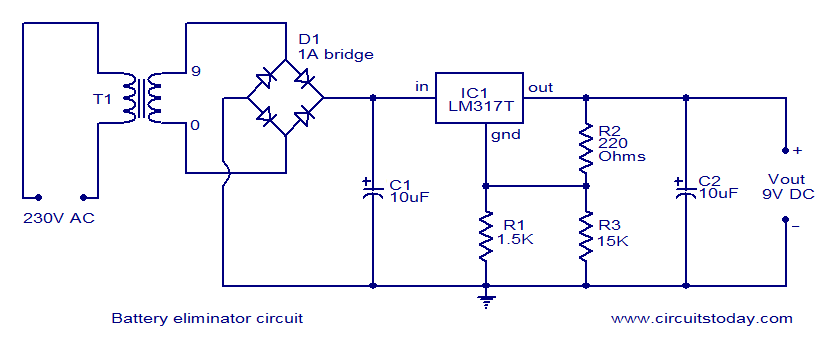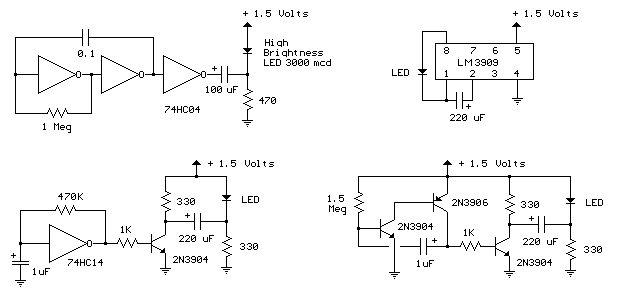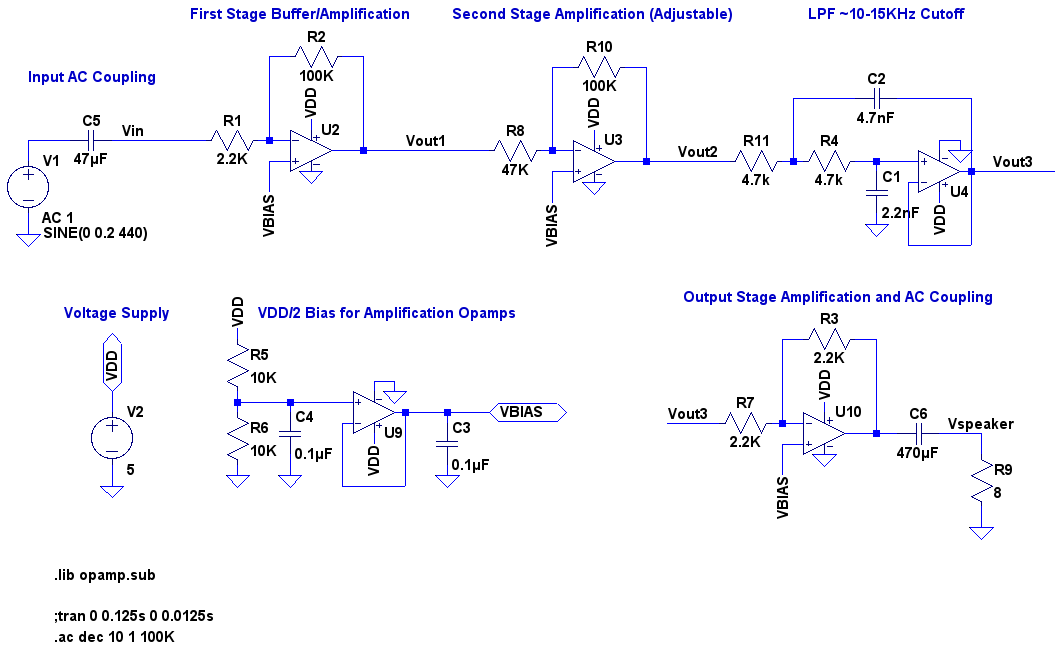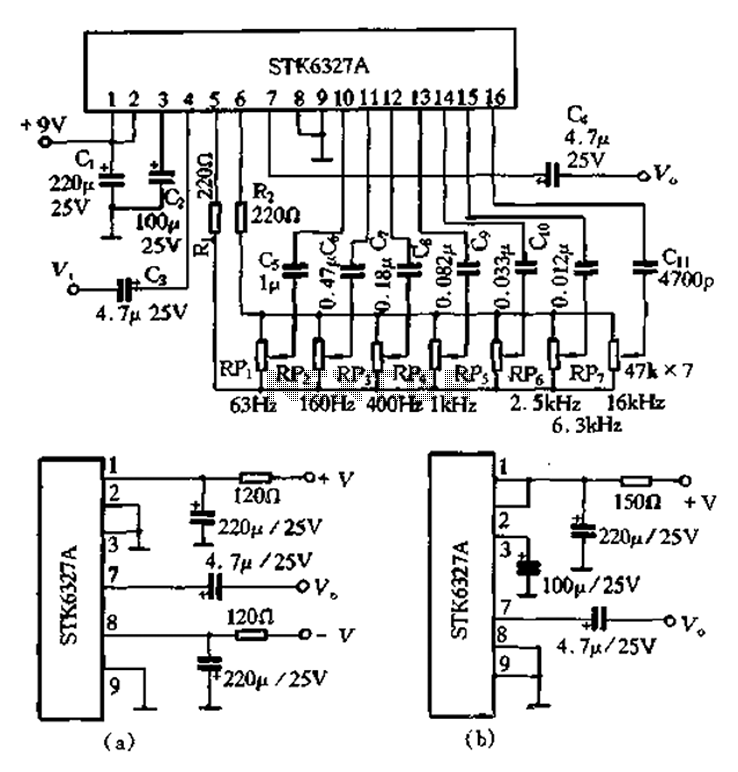
Vibration sensing Voice FM radio transmitter circuit ND-2 TM-801A
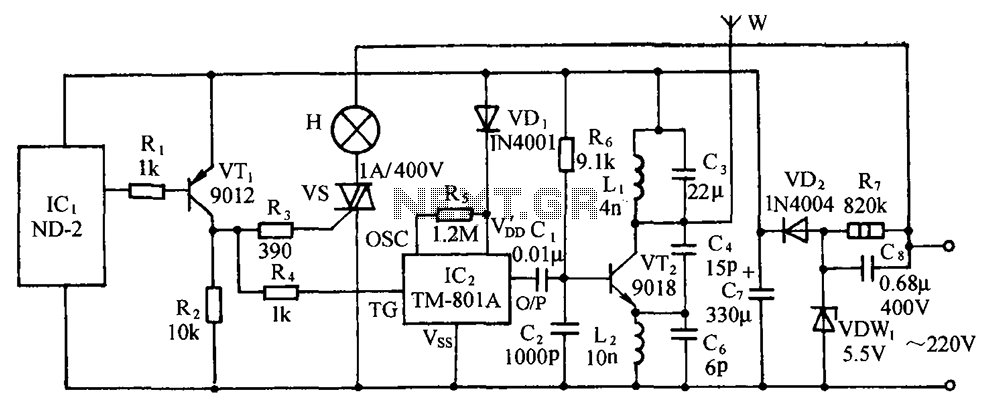
The circuit includes a comprehensive array of components such as vibration sensors, a follower, a lamp relay control circuit, a voice sounding circuit, a high-frequency oscillation circuit, and an AC rectifier buck power supply circuit. The vibration sensor is mounted on the surface of glass cases housing relics or precious exhibits. When an attempt is made to pry open the cabinet, the transmitter circuit activates an automatic voice alarm signal. This signal is modulated using frequency modulation (FM) and is transmitted to a designated FM radio receiver, which demodulates the signal and broadcasts it through speakers to alert the staff on duty of the alarm event.
The described circuit functions as an advanced security system designed to protect valuable artifacts displayed in glass cases. The core component, the vibration sensor, is sensitive to disturbances, such as unauthorized attempts to open the cabinet. Upon detecting such an event, the sensor triggers a transmitter circuit that generates an alarm signal. This signal is processed through a high-frequency oscillation circuit, which ensures that the alarm can effectively modulate and transmit the signal over a radio frequency.
The FM radio receiver, which is set to the specific frequency of the transmitter, demodulates the received signal. This allows the voice alarm to be played through speakers positioned strategically within the vicinity of the exhibit. The system's design ensures that staff members are promptly notified of any security breaches, enabling a rapid response to potential theft or vandalism.
Additionally, the lamp relay control circuit can be integrated into the system to activate visual alarms, such as flashing lights, providing a dual alert mechanism that enhances security measures. The AC rectifier buck power supply circuit is crucial for powering the entire setup, ensuring that all components receive a stable voltage supply for reliable operation. This comprehensive approach to security combines multiple technologies to create an effective deterrent against theft and damage to valuable items. Circuit is shown. It includes a full range of vibration sensors, follower, lamp relay control circuit, voice sounding circuit, high-frequency oscillation circuit and the AC rec tifier buck power supply circuit. The vibration sensor attached to relics or precious exhibits plate surface glass case, when someone steal pry cabinet, the transmitter circuit will automatically voice alarm signal, frequency modulation (FM) radio put on duty at the automatic alarm signal demodulation and broadcast through the speakers to remind staff on duty alarm occurs.
The described circuit functions as an advanced security system designed to protect valuable artifacts displayed in glass cases. The core component, the vibration sensor, is sensitive to disturbances, such as unauthorized attempts to open the cabinet. Upon detecting such an event, the sensor triggers a transmitter circuit that generates an alarm signal. This signal is processed through a high-frequency oscillation circuit, which ensures that the alarm can effectively modulate and transmit the signal over a radio frequency.
The FM radio receiver, which is set to the specific frequency of the transmitter, demodulates the received signal. This allows the voice alarm to be played through speakers positioned strategically within the vicinity of the exhibit. The system's design ensures that staff members are promptly notified of any security breaches, enabling a rapid response to potential theft or vandalism.
Additionally, the lamp relay control circuit can be integrated into the system to activate visual alarms, such as flashing lights, providing a dual alert mechanism that enhances security measures. The AC rectifier buck power supply circuit is crucial for powering the entire setup, ensuring that all components receive a stable voltage supply for reliable operation. This comprehensive approach to security combines multiple technologies to create an effective deterrent against theft and damage to valuable items. Circuit is shown. It includes a full range of vibration sensors, follower, lamp relay control circuit, voice sounding circuit, high-frequency oscillation circuit and the AC rec tifier buck power supply circuit. The vibration sensor attached to relics or precious exhibits plate surface glass case, when someone steal pry cabinet, the transmitter circuit will automatically voice alarm signal, frequency modulation (FM) radio put on duty at the automatic alarm signal demodulation and broadcast through the speakers to remind staff on duty alarm occurs.
Warning: include(partials/cookie-banner.php): Failed to open stream: Permission denied in /var/www/html/nextgr/view-circuit.php on line 713
Warning: include(): Failed opening 'partials/cookie-banner.php' for inclusion (include_path='.:/usr/share/php') in /var/www/html/nextgr/view-circuit.php on line 713
